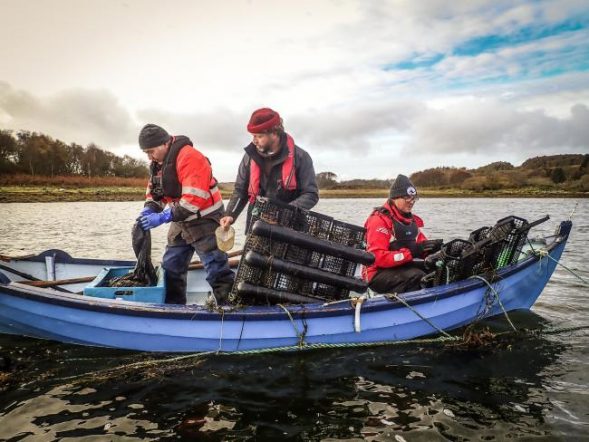
Image © Seawilding
For most gardeners, the fiddly task of sowing seeds is eventually rewarded by seeing the fruits of their labours blossom and grow.
But for pioneering volunteers involved in a major underwater garden project, the flowering meadows of seagrass which they plan to nurture from tens of thousands of seeds, will remain hidden from sight beneath the waves.
In a few weeks’ time, dozens of people living in on the fringes of Loch Craignish in Argyll and Bute will enter its chilly water to gather bouquets of seagrass, which will be used to harvest around 100,000 seeds.
In the first project of its kind in Scotland, the seeds will then be carefully sorted and prepared by hand, before being tucked into thousands of tiny hessian bags which are then individually planted on the sea loch floor.
If successful, their massive labour of love will see new plants cover around a quarter of a hectare of seabed, helping to restore degraded seagrass meadows, boosting biodiversity and creating lush underwater fields capable of capturing carbon up to 35 times faster than tropical rainforests.
Although highly labour intensive and requiring the support of volunteers from local communities to plant and then monitor progress, the project will pave the way for more in coastal sites where large areas of once thriving seagrass meadows have been lost.
Seawilding
The seagrass planting is part of a wider ‘rewilding’ project run by the charity Sea Wilding, which will also see a million native oysters reintroduced to the sea loch’s waters.
Since its launch in October, around 60,000 junior oysters have been placed by hand on the seabed, with plans for a further 100,000 later this month and another 100,000 in October.
Loch Craignish, between Oban and the Crinan Canal, opens onto the Sound of Jura, and in Victorian times was famed from its abundant marine life, huge oysters and scallops. Its lush seagrass meadows provided an ideal spawning ground for white fish such as cod and herring.
However, a combination of bottom trawling, dredging and pollution has been blamed for the loss of oysters and destroying once huge areas of seagrass which covered its floor. Although the loch has ten small and relatively healthy seagrass meadows totalling around one hectare, they are isolated and fragmented.
As well as the impact on carbon capture, the loss of seagrass has been partly blamed for the collapse of west coast white fish stocks. While seagrass meadows are said to harbour up to 40 times more marine life than areas without grass.
Sea Loch
Danny Renton, founder of Sea Wilding, which has received £225,000 of National Lottery Heritage Fund grant to support the oyster project, said both it and the seagrass restoration work are aimed at replacing important elements of marine life to the sea loch.
“We are trying to prove that it’s possible to put something back and regain something that has been lost,” he said.
“Seagrass is disappearing. But it is huge in terms of biodiversity and is seen as critical to blue carbon – we are now waking up to the amount of carbon that seagrass and native oysters sequester.
“Seagrass has dense root systems, it’s like a peat bog on the seabed. Trying to enhance it is very important.”
However, both projects are hugely labour intensive both in terms of returning plants and oysters to the seabed and additional work is required to monitor and assess the success of both the oysters and seagrass harvest.
It means local communities and schoolchildren are being drafted in to support marine scientists in helping to ensure their success.
Read the full article The locals cleaning up their sea loch to bring wildlife back at The Herald.
Tags: Oysters, Restoration, Rewilding, Seagrass